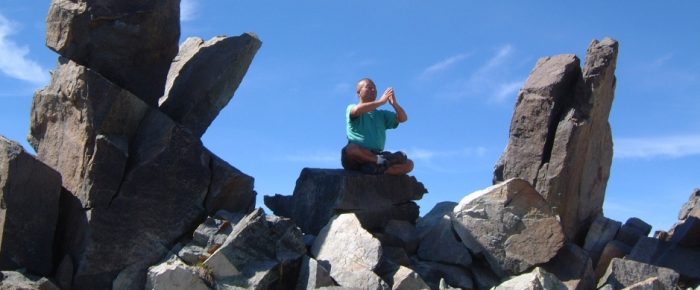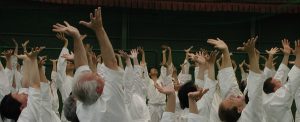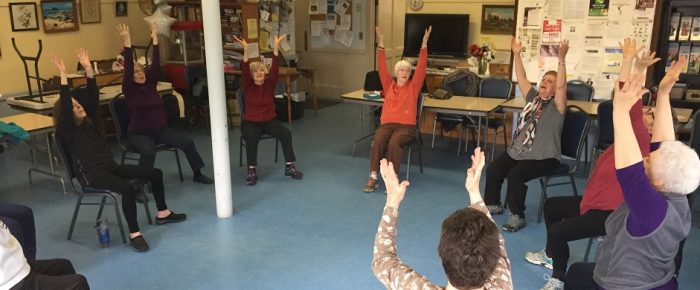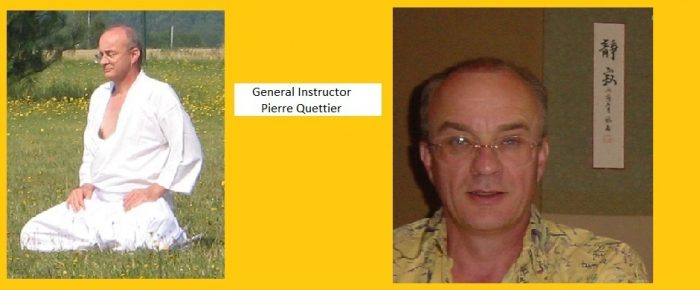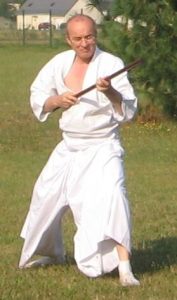A Recap of the Semi-International Gasshuku in Tirrenia, Italy
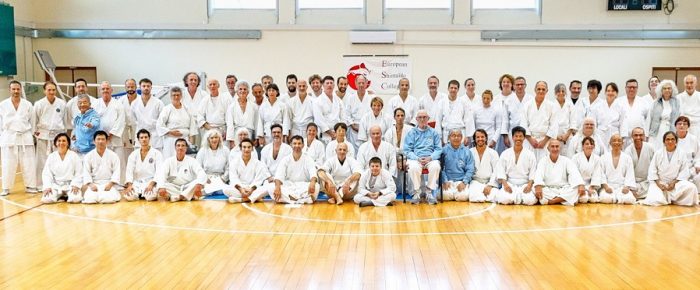
31 October to 4 November 2018
By Connie Borden and Shin Aoki
For five days, sixty Shintaido Practitioners practiced in Tirrenia, in the Italian region of Tuscany. From pasta to wine, from early morning meditation to late evening meetings, the group was united in the theme Toitsu Tai. Organizers Davide, Patrizio and Gianni had the vision of each keiko trying to reach the core of Shintaido. They asked the teachers of the subjects of karate, bojutsu, kenjutsu, meditation and open hand Shintaido to show these disciplines as expressions of the same spirit from the deep heart of Shintaido. As Mike Sheets said: “The instructors had us work very hard to find the center of both yourself and your partner. The other reminder was not about pieces of Shintaido but the whole – how they are connected.”
Master Instructor Masashi Minagawa spoke of the theme Toitsu Tai – Unification. Here are his words:
“We (Gianni and I) agreed that when you let go of unnecessary things, only the character ichi- one -Oneness is left. . . .
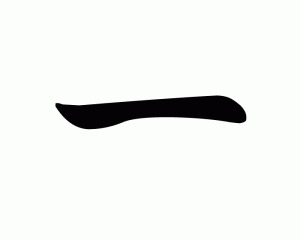
Ichi – One
For me, this one line contains everything. It is the ‘Line of Life’, the starting line, the goal line, the beginning and the end. It is my Golden Line, The Diamond Eight, One swing of the sword and “Ichi no Tachi” – the first movement of Jissen Kumitachi.”
The advanced group spent the first three keiko studying with Ito Sensei. Chuden no Kata and Okuden no Kata in the kenjutsu program were practiced. In addition, the group selected a few of the advanced Jissen Kumitachi to focus their study.
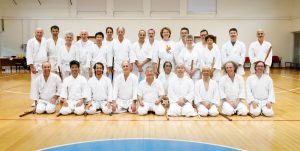
Advanced workshop group
Minagawa Sensei lead the next three advanced keiko to focus on Jissen Kumitachi #1 to 11. Each morning started with an hour of collegial practice to review the teaching from the day before. Each evening concluded with meetings: the Kenjutsu Task Force, the European Technical Committee, and the general membership meeting of the European Shintaido College.
The last night was a party that included Ula leading ice-breaker activities and Shin teaching line dancing!
High level exams were offered Friday afternoon on 3 November. Congratulations to
- Shigeru Watanabe – San Dan Karate
- Daisuke Uchida – San Dan Bojutsu
- David Eve, Alex Hooper, Georg Muller, Marc Plantec, Daisuke Uchida and Shigeru Watanabe – Ni Dan Kenjutsu
- Shigeru Watanabe – Shintaido Sei-Shidoin/Instructor
- Jean-Louis de Gandt, Serge Magne, Mike Sheets and Soichiro Iida – Shintaido Sei-Shihan/Senior Instructor
The general gasshuku began Friday afternoon with a keiko taught by Gianni Rossi. Two keiko were taught on Saturday. Weather cleared enough to be at the beach with a stunning view of the mountains to the north and a calm sea to the west. Shin Aoki and David Franklin taught karate.
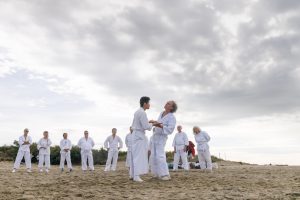
Shin Aoki teaching in Italy
The second beach keiko was bojutsu lead by Alain Chevet, Georg Muller and Stephan Seddiki. The group experienced an Italian sunset over the water.
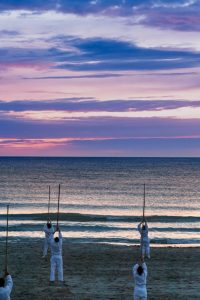
Bojutsu keiko at sunset Italy
Saturday morning and Sunday morning, Ito Sensei lead a 6:30am Taimyo meditation.
The fourth keiko was kenjutsu by Pierre Quettier and Ula Chambers. Pierre gave a demonstration with his katana showing Chuden no Kata and Okuden no Kata. Masashi Minagawa lead the closing keiko with open hand Shintaido.
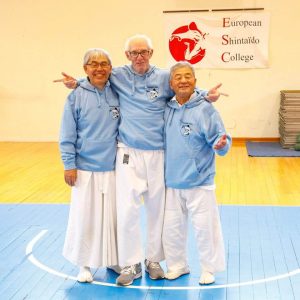
Three masters of Shintaido
The United States was represented by David Franklin, Mike Sheets, Connie Borden, Michael Thompson, Mark Bannon, HF Ito and Shin Aoki.
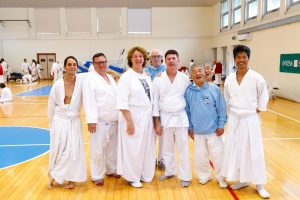
USA group at Italy semi international
Photos by Marc Plantec.

